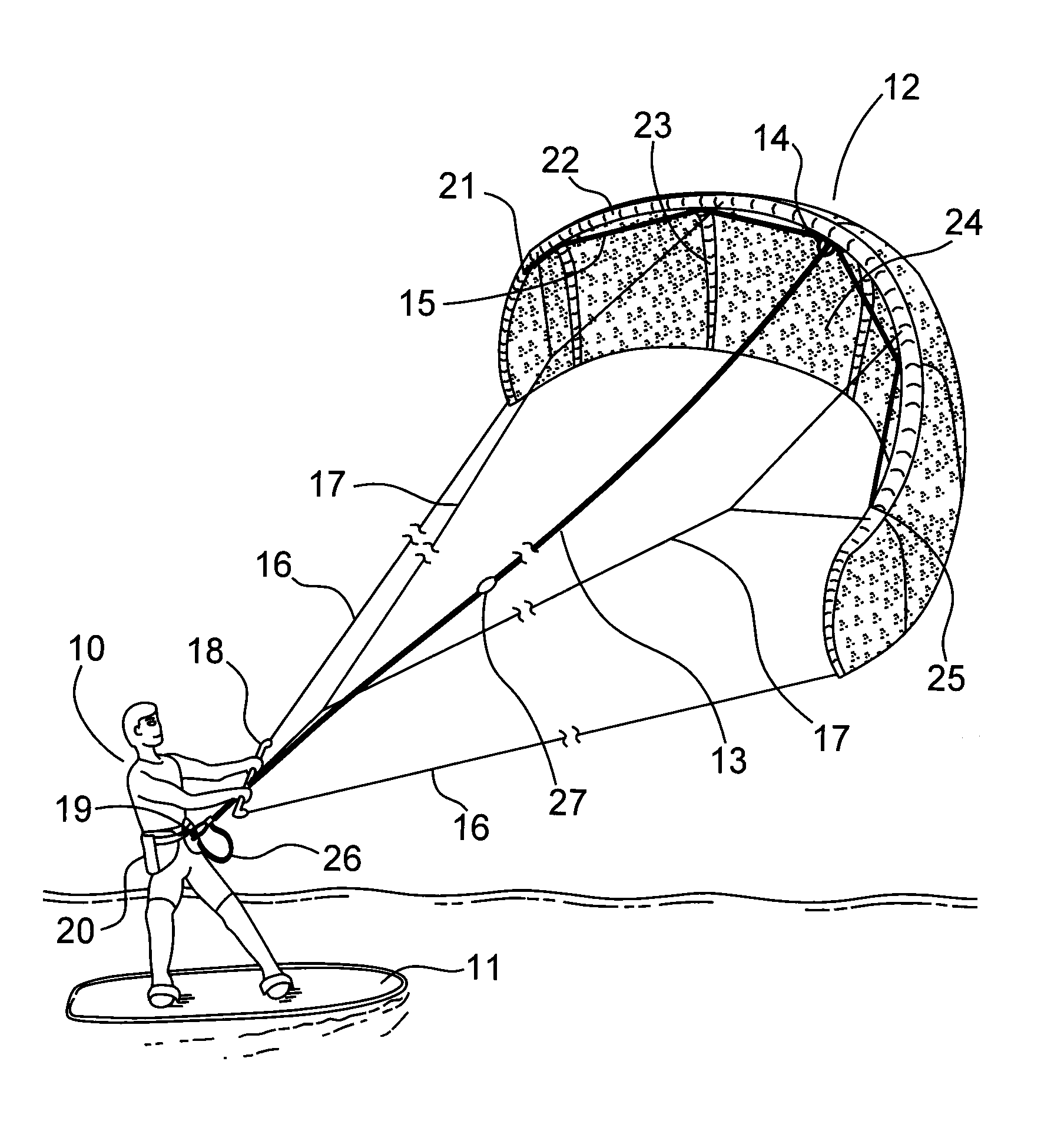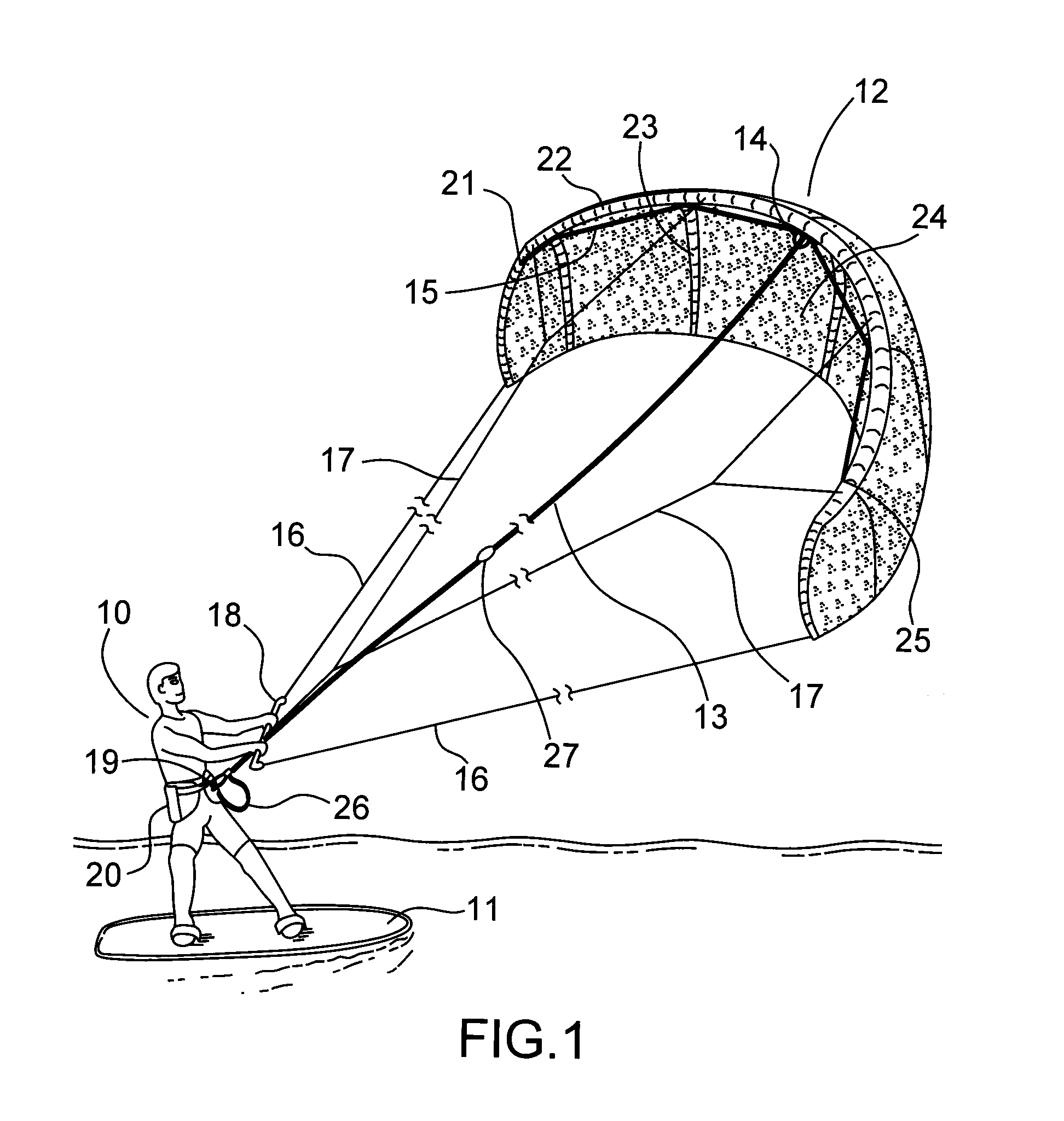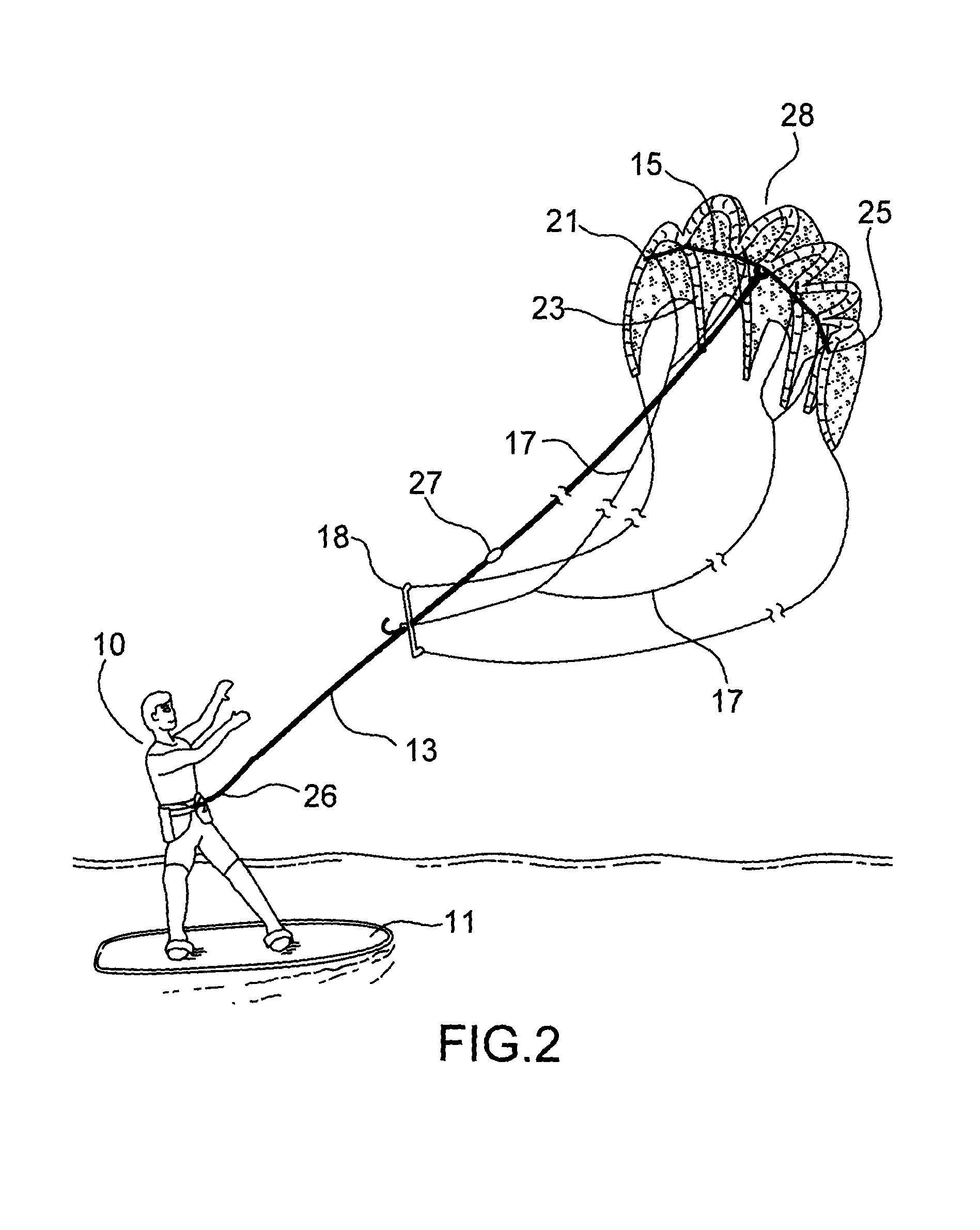In-flight kite deflation and control systems
a kite and control system technology, applied in special-purpose vessels, marine propulsion, vessel construction, etc., can solve the problems of kite losing its aerodynamic shape and deflating the bladder, and achieve the effect of reducing the aerodynamic shape of the kite and the ability to power-up in the wind
- Summary
- Abstract
- Description
- Claims
- Application Information
AI Technical Summary
Benefits of technology
Problems solved by technology
Method used
Image
Examples
Embodiment Construction
[0095]FIG. 1 is a sketch of the preferred embodiment with the kite rider 10 standing on a kite board 11 holding a kite 12, with the deflation control line 13 threaded through a hole in control bar 18 and connected to leash 26, one end of which is connected to the kite rider's harness 20.
[0096]The other end of deflation control line 13 branches into two lines 15 at ring 14 (see FIG. 3), with each of these lines 15 connecting to the wing's opposed tips at points 21 and 25. Lines 15 are also engaged to the wing by being threaded through a number of loop attachment points positioned along the wing's leading edge, for example by loops 34 (see FIG. 4).
[0097]The wing's leading edge bladder is depicted as 22 in FIG. 1. Bladder 22 is comprised of an elastomeric material, which is housed in an abrasion resistant cloth covering, such as Dacron polyester. For convenience, the bladder and bladder covering are both depicted as 22.
[0098]In many prior art applications, the leading edge bladder comp...
PUM
 Login to View More
Login to View More Abstract
Description
Claims
Application Information
 Login to View More
Login to View More - R&D
- Intellectual Property
- Life Sciences
- Materials
- Tech Scout
- Unparalleled Data Quality
- Higher Quality Content
- 60% Fewer Hallucinations
Browse by: Latest US Patents, China's latest patents, Technical Efficacy Thesaurus, Application Domain, Technology Topic, Popular Technical Reports.
© 2025 PatSnap. All rights reserved.Legal|Privacy policy|Modern Slavery Act Transparency Statement|Sitemap|About US| Contact US: help@patsnap.com



